Museum rarities: real tosei gusoku armor
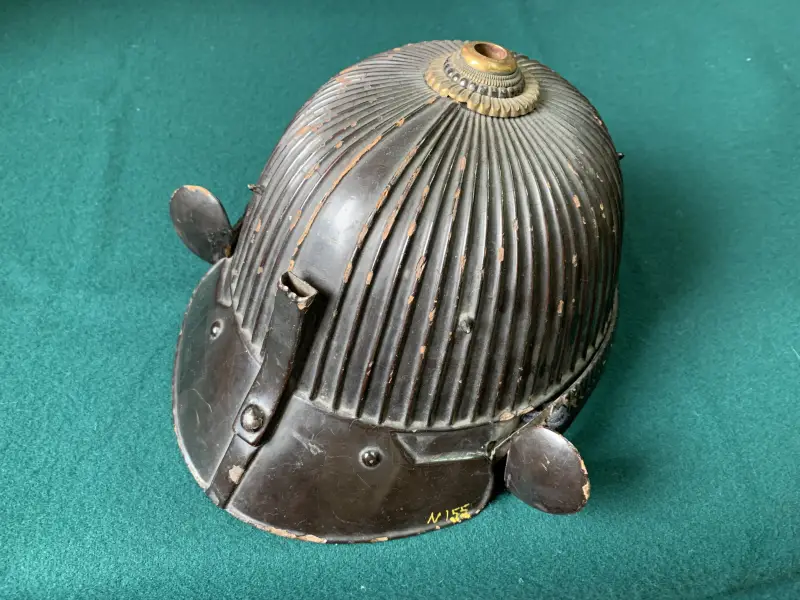
Suji-kabuto helmet, which has 62 “suji” ribs, that is, consisting of 62 metal plates. A very similar gleyem is on display at the Metropolitan Museum of Art in New York. It says about him that he belongs to the Muromachi era. Year of manufacture 1538
And ready for battle, brave and stubborn.
Others waste their days,
They will not understand the brave in spirit.”
Chinese poet Cao Zhi “To shrimps and eels from the lake...”
History weapons. I don’t know how, I don’t know why, but when I visited the Penza Regional Museum of Local Lore in my early childhood, I didn’t see the armor of a Japanese samurai there. That's all I didn't see. Then, when my wife started working there, I found out that he was there. And even out of the corner of my eye I managed to glance at his cuirass, which did not make any impression on me then. This is the disastrous lot of the ignoramus! The eyes see, but the brain does not understand, the ears hear, but... the person does not understand.
Indeed, it turns out that, as one of our authors recently wrote, it is impossible to seduce a person with a donut with condensed milk if he has never seen either donuts or condensed milk, and certainly has not tasted either one or the other.
But time passed, my knowledge in this area increased, and when this armor finally fell into my hands, I could already appreciate it and photograph it the way I wanted.
But I was unable to find out how they got to Penza. It is possible that even before the revolution, when the Japanese actively traded in the military past of their homeland, exchanging Snyder rifles and Colt revolvers for dollars and pounds. In any case, the armor turned out to be very interesting, so today we will finally look at real Japanese armor in detail.
Brief description of the exhibit: Japanese samurai armor of the “tosei gusoku” (“new armor”) type. Could not have been made before 1556. But it could well have been made before 1868.
Let's start looking at it with the helmet.
This is a suji-kabuto, and it could not have appeared on this armor before 1556, and most likely appeared even later, all because the armor contains chain mail, and it was borrowed by the Japanese from the Europeans and is not found on earlier examples of armor .

Top view of the helmet. The tehen hole is clearly visible, through which the spirit of the god Hachiman was supposed to enter the warrior’s head. And through it the end of the eboshi cap came out
It is known that such helmets belonged to officers, ordinary samurai were content with a helmet with only a few parts, and ashigaru even had a jingasa helmet-hat. Such helmets were typical for the last years of the Muromachi era (1336–1573). But most likely, it was made later, in the 1868th–XNUMXth centuries, and sold together with other parts of the armor to foreigners after the discovery of Japan in XNUMX.
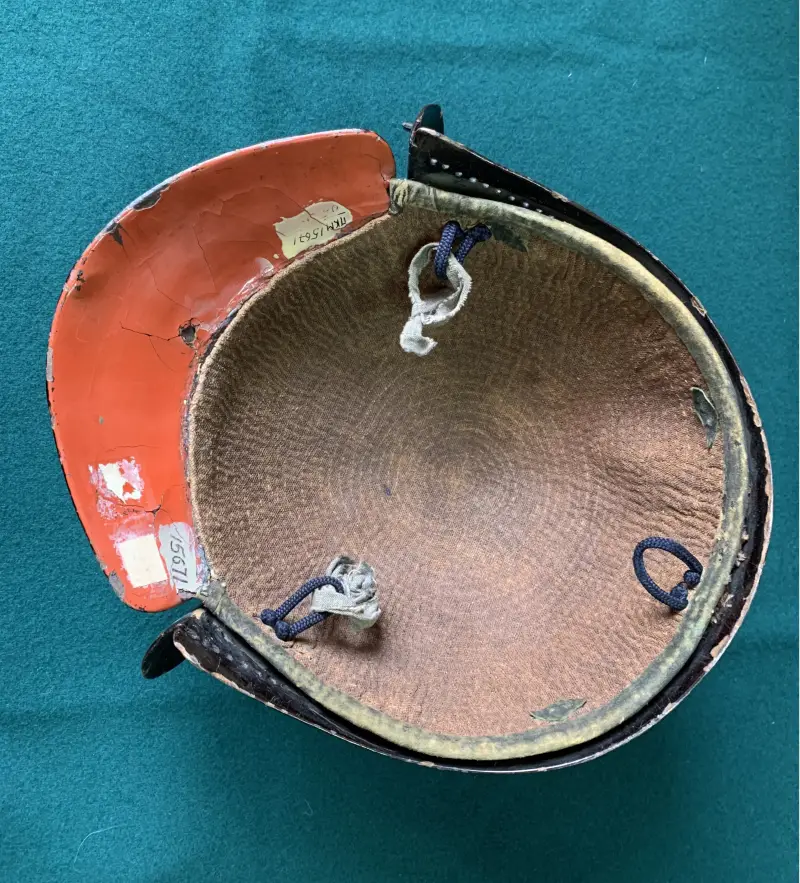
Inside view of the helmet
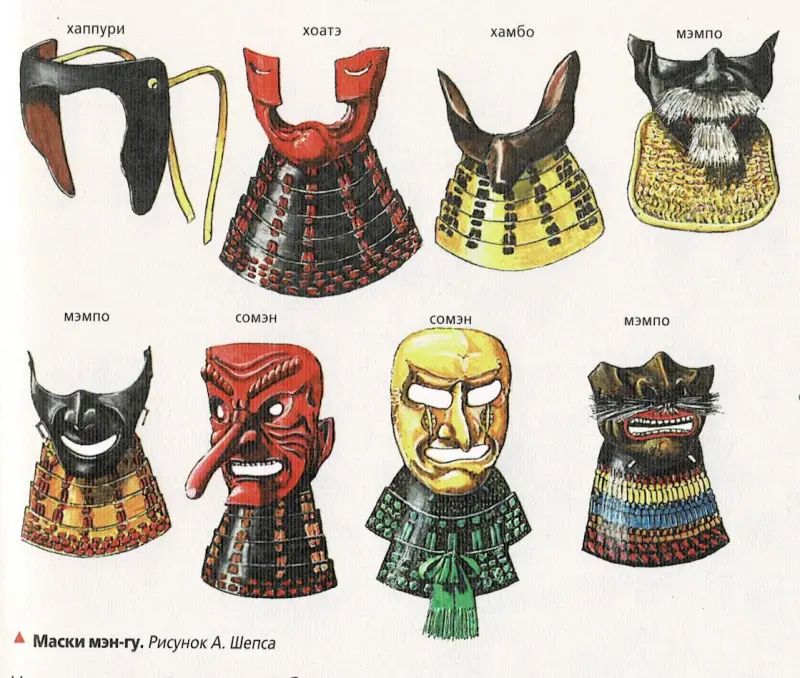
Samurai masks men-gu. In Japan, they replaced the European visor of a knight's helmet. All masks, except happuri, were worn only by samurai! Rice. A. Shepsa
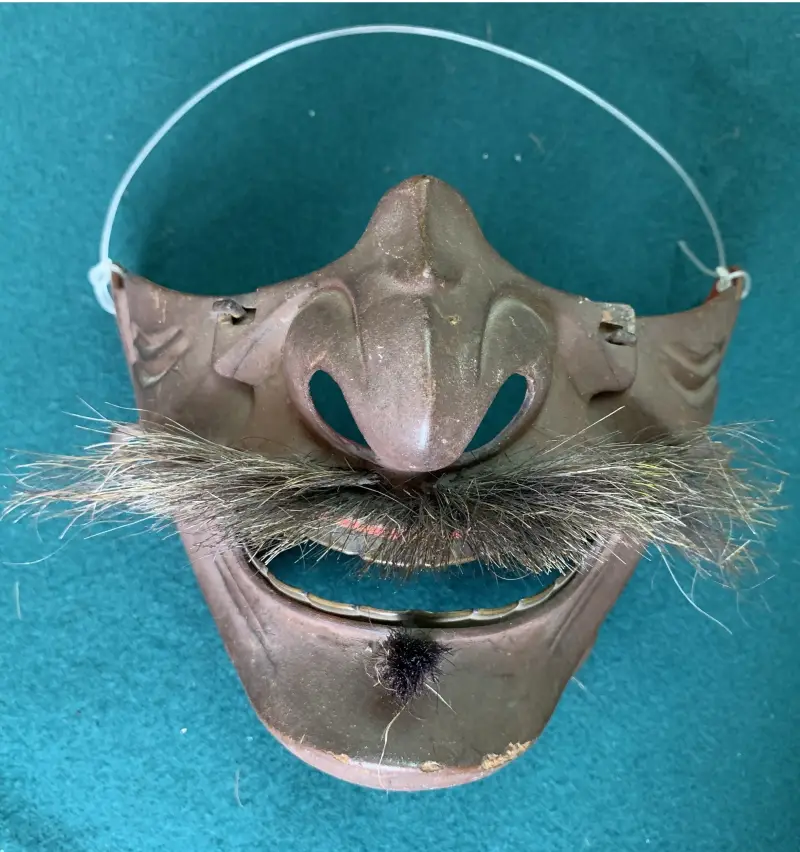
A typical mempo mask. Consists of two halves, fastened with hooks so that the nose can be removed. The inside is covered with well-preserved red varnish. There is rust on the outside, which indicates that it was not covered with Japanese varnish. Most likely it was painted. There is no doubt that this is part of battle armor, and not a souvenir craft for foreigners, as evidenced by the thickness of the metal and the weight of the mask - it is by no means light!
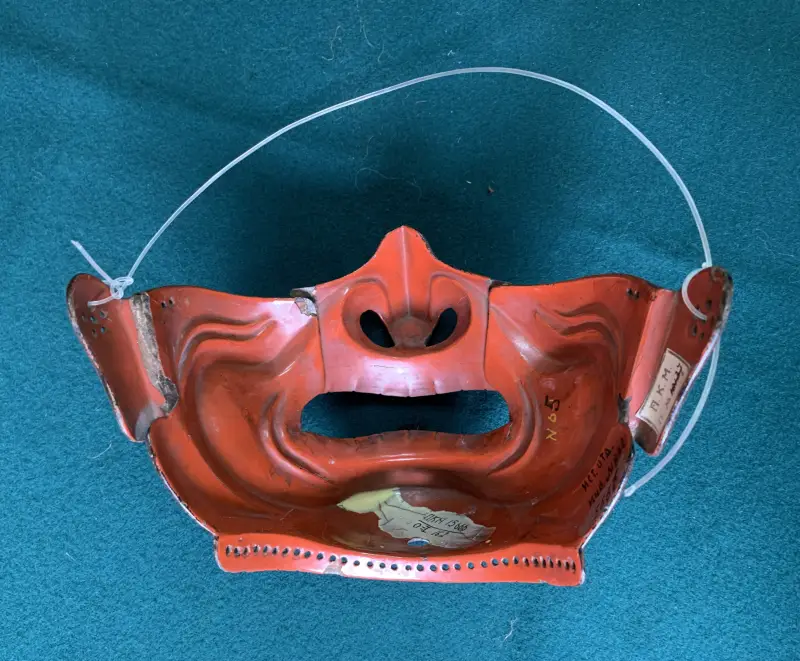
Mempo mask, view from the inside. The inside of samurai masks was always covered with red varnish so that blood would not be visible on their surface...
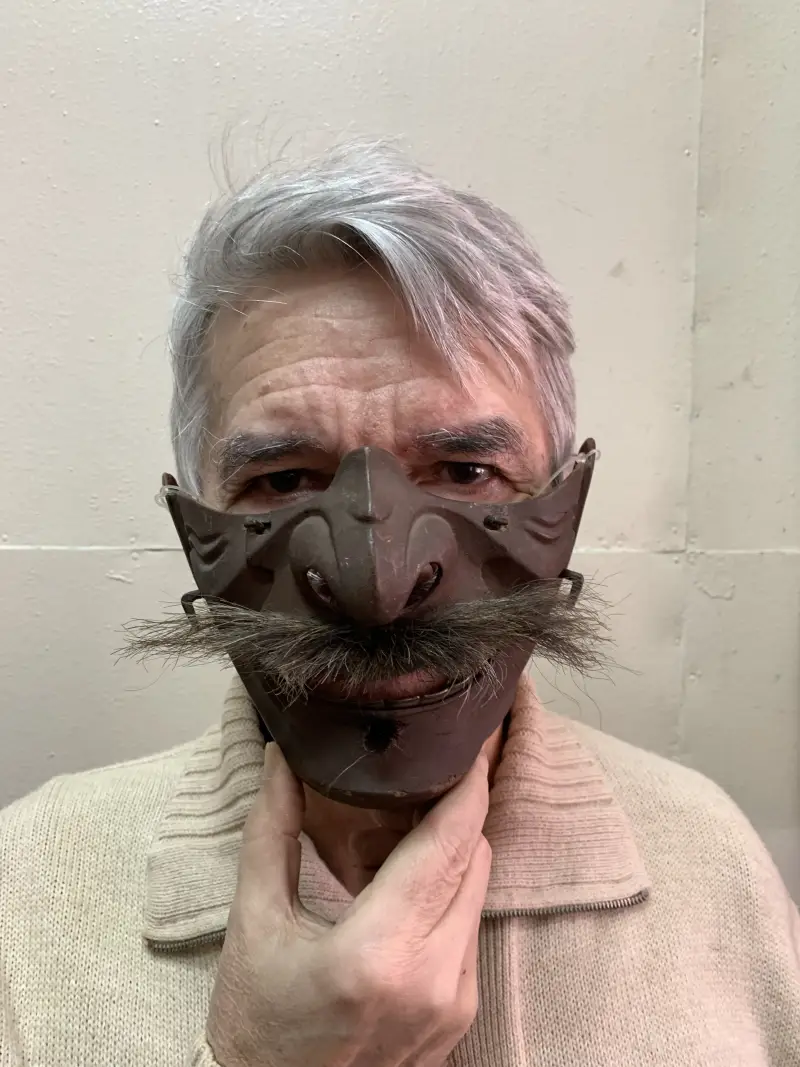
And this is how scary she looks on the author
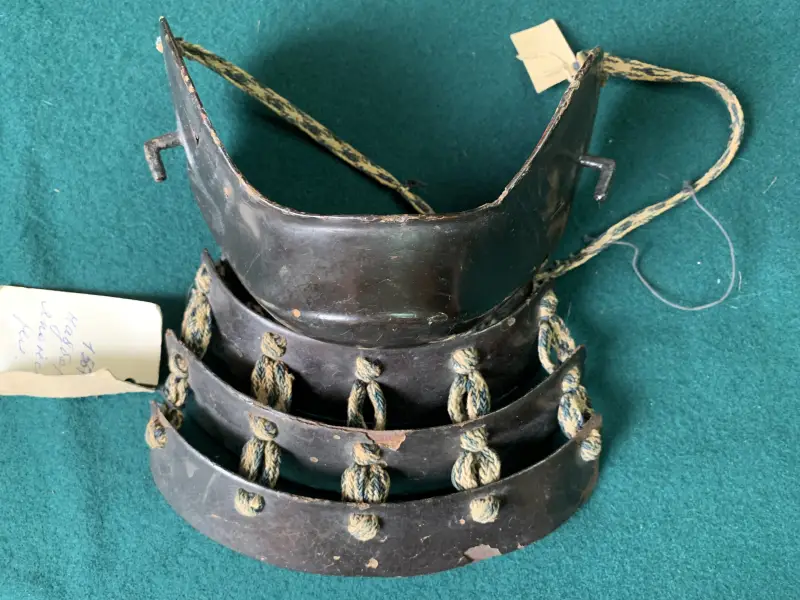
Hoate face mask with yōdare-kake throat cover. The inside is covered with red varnish. The mask material is metal. The throat cover is patent leather. The lacing is sparse - sugake-odoshi. Two large L-shaped hooks on the sides served to attach cords that secured the mask to the face

“Very strange inscription” on the tag of a Hoate mask. Such “descriptions” are, alas, not uncommon in our museums. However, where else does complete amateurism not manifest itself?!
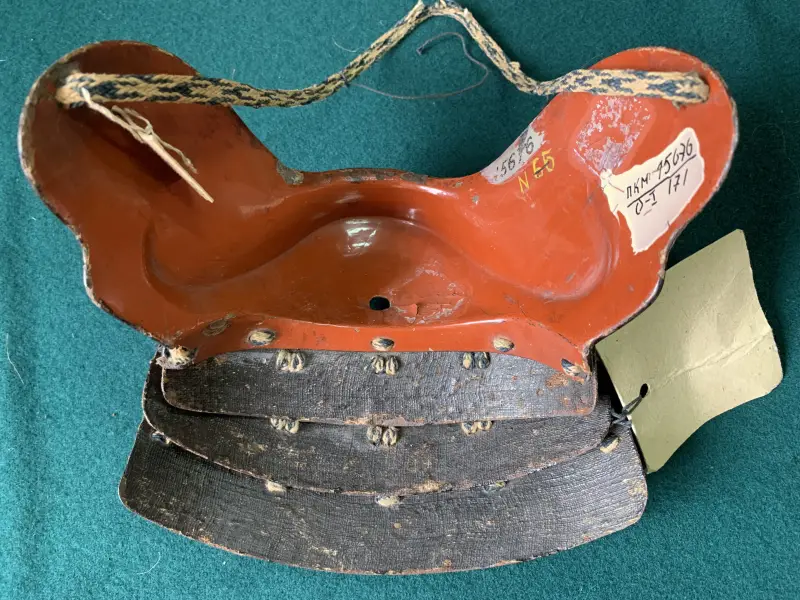
The same Hoate mask, view from the inside. The hole in the chin was used to allow sweat to flow out!
The cuirass of the tosei-gusoku armor is made of riveted horizontal stripes (okegawa-do). Since the heads of the rivets are visible, this is kakari-do or byo-kakari-do. The patch pocket on the left is typical for the armor of Japanese musketeers and their ko-gashiru commanders. Two rings served to hang the gumbai-utiwa battle fan, to which the commander gave orders with signs.
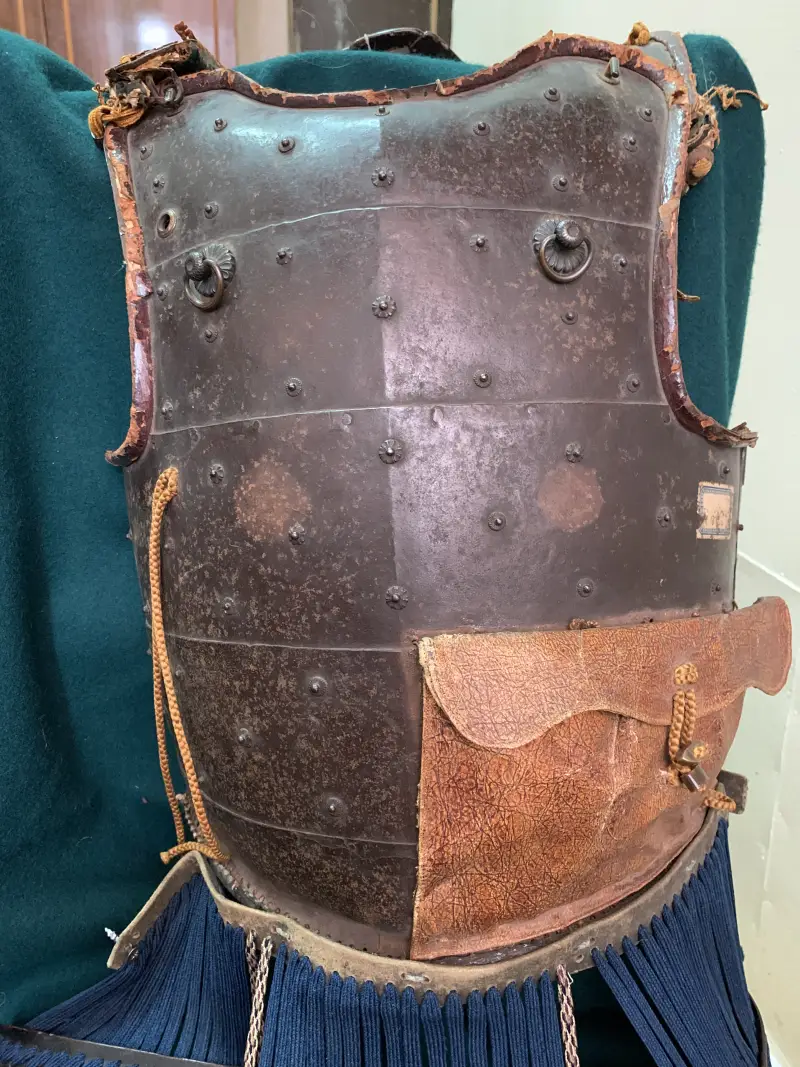
Here it is - “cuirass with a patch pocket”

Even simple rivets on Japanese armor were an example of craftsmanship!
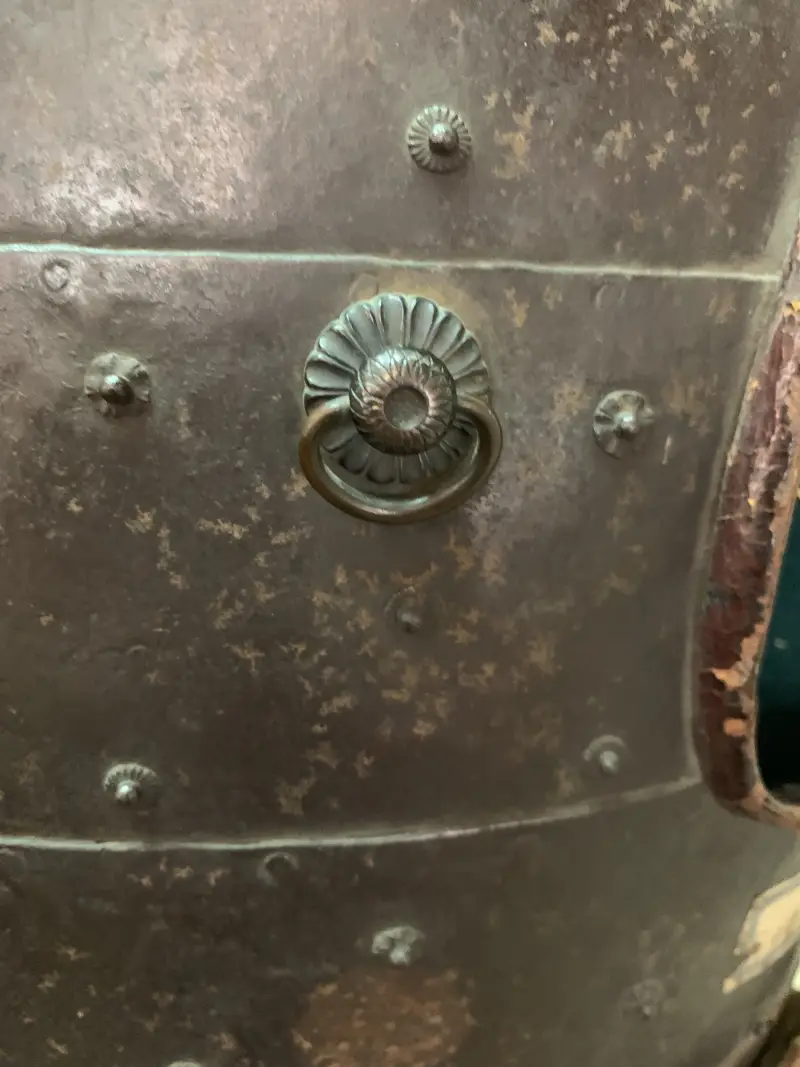
One of the chest rings

Dorsal detail of samurai gattari armor. Served to insert the personal identification flag of the samurai Sashimono into the hole in it
Not only flags, but also strange symbols in the form of wool balls, turnips with papier-mâché leaves, a skull, a pestle for pounding rice, an umbrella, a fan, and a set of prayer sticks could be used as sashimono. Any object surrounding a samurai could become his sashimono. If only they were somehow different from others. The gattari also included a pencil case for the shaft in the lower part of the cuirass. But this armor does not have it.

Six-section kusazuri “skirt”, with rare sugake-odoshi weaving. Blue cords - yuguchi-ito. Each section consists of five plates made of patent leather. The photo shows one of the sections
The sleeves of Japanese armor, or bracers, were always made of fabric and were worn separately. Moreover, at first they had only one sleeve and only then two, so this makes it possible to attribute them more confidently. It is also important to keep in mind that chain mail in Japan had a different form of weaving, and more than one, different from those used in Europe, and besides, it was almost always sewn onto fabric.
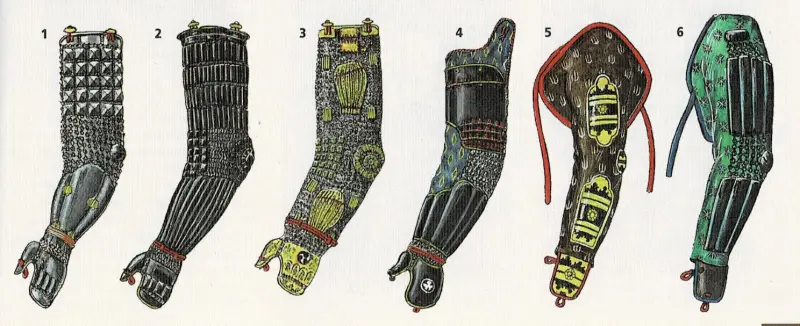
Types of armored kote sleeves (in Japanese, one of the consonants of a word is often changed for a melodic sound): 1 – tsutsu-gote, XIV century, 2 – Sino-gote, XVI–XVIII centuries, 3 – oda-gote, XVI–XIX centuries centuries, 4 – bishamon-gote, 5th century, 6 – yoshitsune-gote, XNUMXth–XNUMXth centuries, XNUMX – o-sino-gote, XNUMXth–XNUMXth centuries. Rice. A. Shepsa
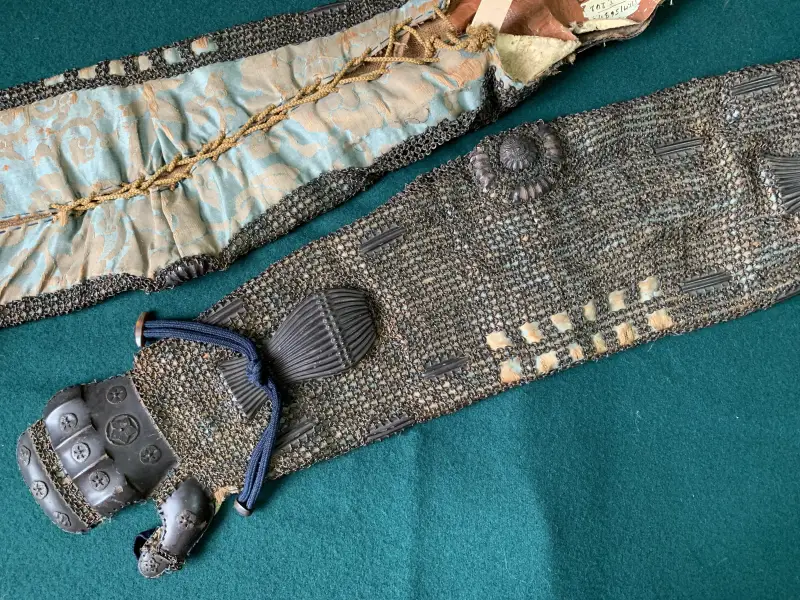
Before us are two sleeves - typical ode-kote with pear-shaped ribbed Shiwa-Fukume plates and metal ikada plates. Kusari chainmail weaving is sewn onto fabric according to Japanese tradition. Kame-ko-gusari weaving type. Edo era. The fabric base of the iyeya is well preserved. There are also metal tekko mittens with the family's coat of arms

Shiwa-fukume close-up
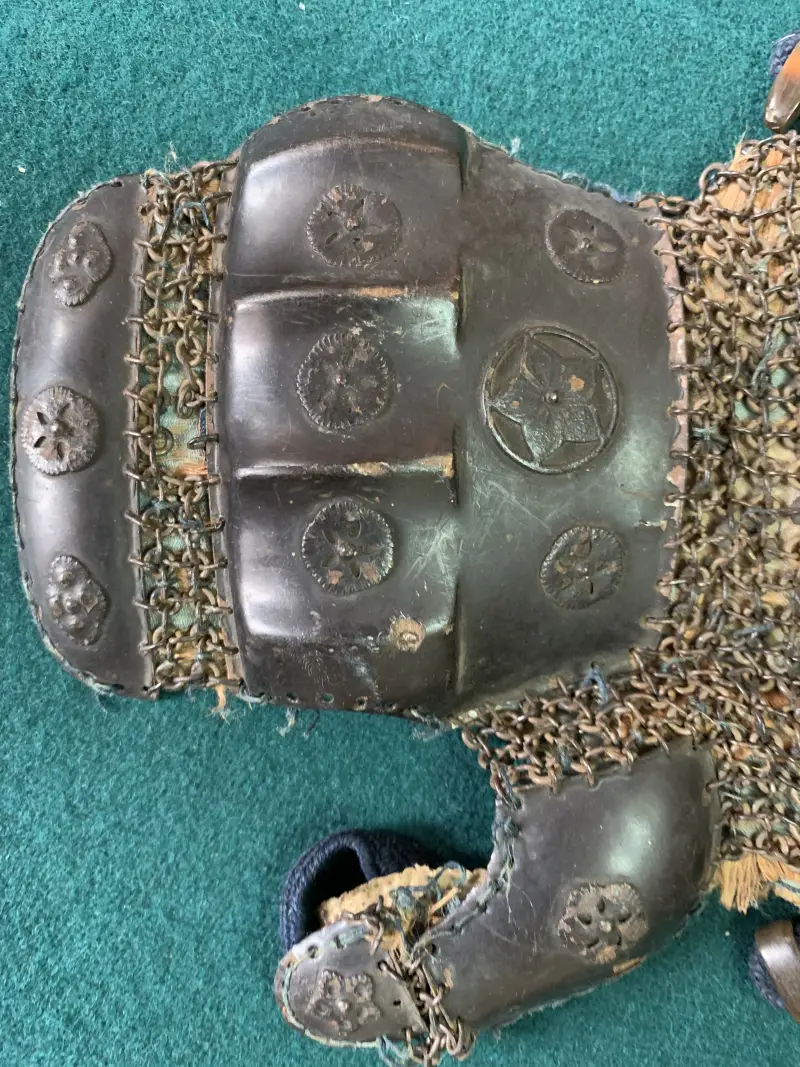
Plate gloves were integral with the kote and covered the back of the hand and the thumb. To find out which family the mon depicted on them belonged to - the coat of arms - a flower with five petals in a circle, you will need to make a request to Japan, to the Tokyo National Museum
In any case, this armor is very interesting. And they are preserved quite well, although they certainly need restoration.
But who will conduct it?
We simply don’t have specialists of this level in our city, and where would they come from? And those in Moscow will charge money unthinkable for the museum’s budget for this.
PS
And it had to happen for this armor to fall into my hands, just when I received from the publisher my next book from the series of “Large Illustrated Atlases” - “Samurai - Knights of the Land of the Rising Sun.” The book is very well published. There is not a single page, except perhaps a glossary of terms, and there are 191 of them in total, that does not have 2-3 color illustrations. Very high quality paper and printing.
The book, in great detail and very clearly, again in color, shows the armor and weapons of the samurai, and their homes, castles, and tells the story of the most famous. At one time, a series of articles about samurai was already published on our website. But for a long time. And some of it ended up in this book, but the overwhelming number of photographs are completely original, that is, they have not been published before and were obtained from the most famous museums in the world.
Many photos were taken directly in Japan. For lovers of oriental exoticism and as a gift for children, this is just the thing...
Next up is the continuation of the book “The Brilliant Middle Ages: Knights and Castles,” which will be dedicated to the chivalry of the 16th–17th centuries, and will be called “Knights of Decline.”

Here it is, this very book, or rather, a photograph of its cover
Information